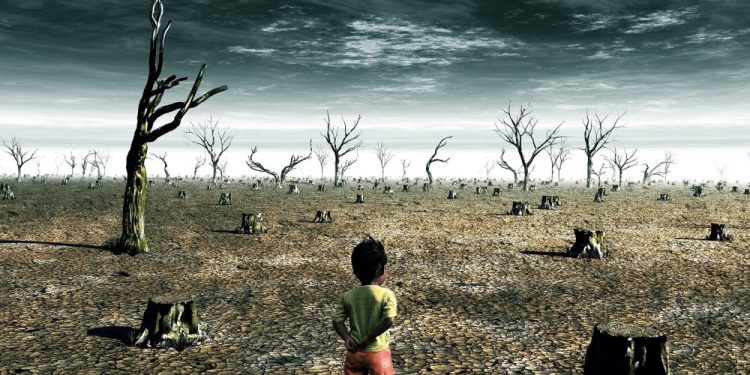No, this “prediction” isn’t your typical ‘end of the world’ scenario and is worrying. In fact, we’ve seen studies like this happen every once in a while. If we stop for a moment and look at what scientists have been trying to tell us in the last few years, we’ll understand that we’ve been on this ‘road to destruction for quite some time now. And climate change is the culprit. But climate change has been the culprit in the past, causing several ancient civilizations to go extinct. However, humans are participating in climate change this time, shifting gears and causing the climate to change rapidly and abruptly.
The year 2050
Now, a new study has warned that climate change could cause human civilization to collapse during the next few decades. The new climate analysis was published by the Breakthrough National Center for Climate Restoration. An independent think tank focused on Melbourne’s climate policy, which considers global warming as “an existential threat in the short or medium term.” Authors David Spratt and Ian Dunlop, both longtime climate researchers, alarmingly warn that “the planetary and human systems [are] reaching a ‘point of no return‘ by the middle of the century, in which the perspective of a largely uninhabitable Earth leads to the disintegration of nations and international order.”
The experts suggest that if global temperatures rise 3 degrees Celsius by 2050, as much as 55% of the world’s population across 35% of its land area will most likely experience more than 20 days of extremely lethal heat per year, which is “beyond the threshold of human survivability.” In other words, some parts of Earth would become too hot to live in. This is worrying because of several factors. Scientists have revealed that numerous ecosystems on Earth, like those in the Arctic, the Amazon rainforest, and coral reef systems, would collapse if this scenario occurred.
The abrupt climate could cause entire populations to migrate. Researchers have revealed that in regions across West Africa, tropical South America, the Middle East, and Southeast Asia, people would be exposed to more than one hundred days of insane, deadly heat. This scenario would leave more than 1 Billion people displaced.
Global Temperature
Scientists have warned that if the industrial business model that currently harms the environment is not modified, the planet will likely increase its temperature by at least 3 degrees Celsius, destroying critical ecosystems. This could lead to one billion people being forced to migrate, and 2 billion more would face food and fresh water shortages. In subtropical countries, agriculture would collapse, and food production would be affected worldwide. The UN has revealed that — under a business-as-usual scenario — millions of premature deaths could be expected due to air pollution, mass species extinction affecting the ability to meet human food and resource needs, and freshwater pollutants making antimicrobial-resistant infections a major cause of death by 2050, reports CNN.
The solution is to make an effort “similar in scale to the emergency mobilization of World War II,” focusing all efforts on constructing an industrial system with zero emissions, reveal experts. However, not everyone agrees with the recent report. Michael Mann of Pennsylvania State University explains that the report is overblown rhetoric. “I respect the authors and appreciate that their intentions are good, but as I have written before, overblown rhetoric, exaggeration, and unsupportable doomist framing can be counteractive to climate action.”
Join the discussion and participate in awesome giveaways in our mobile Telegram group. Join Curiosmos on Telegram Today. t.me/Curiosmos











